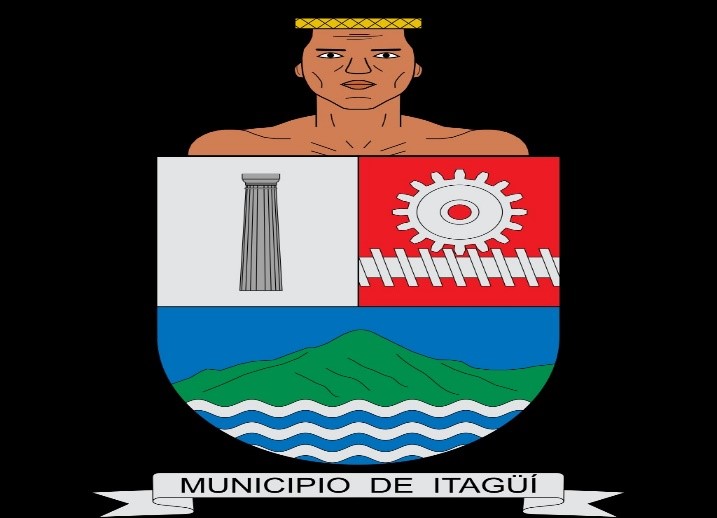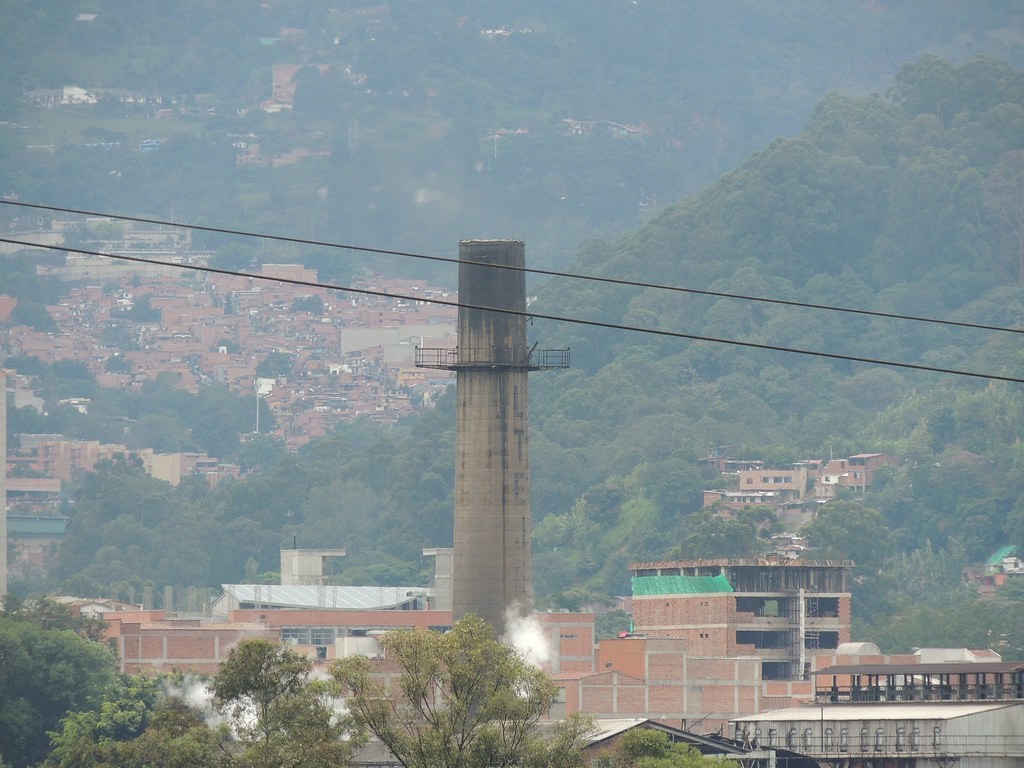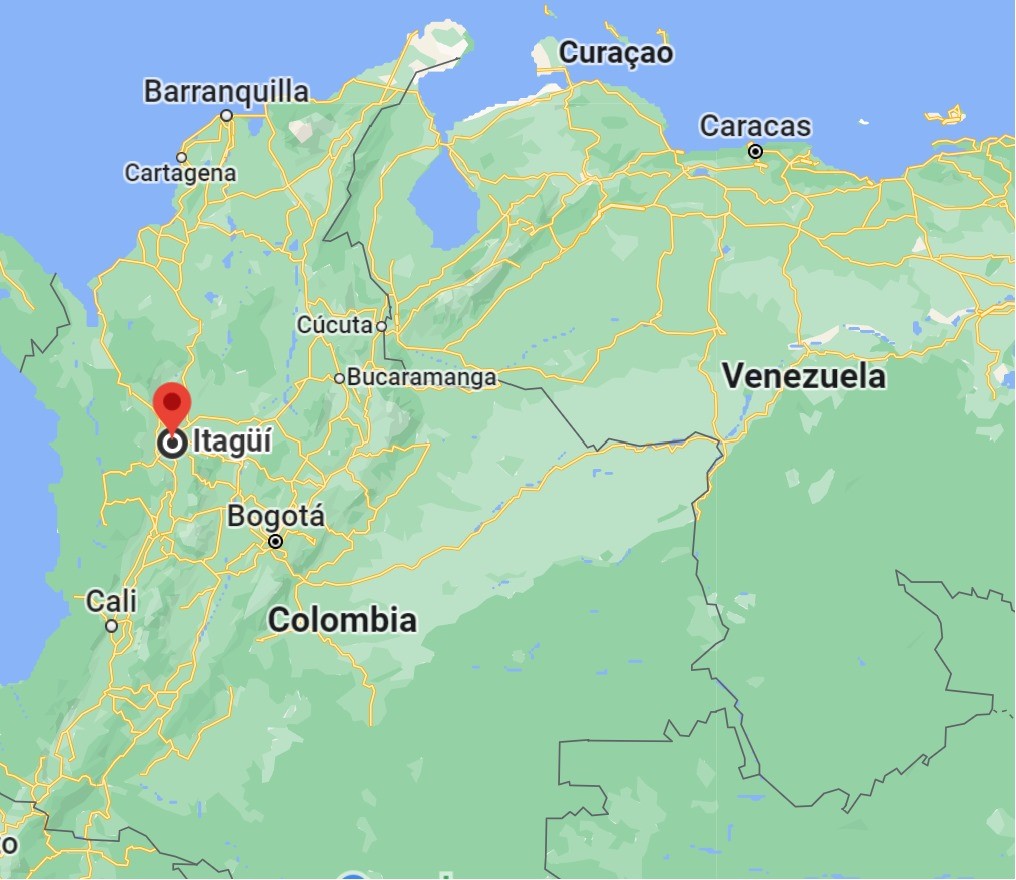Itagüí
Department
Antioquia, Colombia

Flag of the city
The flag of Itagüí, a vibrant city in the department of Antioquia, Colombia, boasts three horizontal stripes in a sequence of yellow, green, and red. The top yellow stripe represents the abundant resources of the region, signifying prosperity and the golden warmth of the sun. The central green stripe stands as a tribute to the verdant valleys and mountains, emblematic of hope, growth, and the omnipresent touch of nature in the area. Meanwhile, the bottom red stripe encapsulates the fervent love, passion, and dynamism that define its inhabitants. Together, these colors not only mirror the region’s natural beauty but also echo the shared heritage, aspirations, and unwavering pride of the Itagüí community.

Seal of the city

Slogan of the city
The slogan of Itagüí, a city in the department of Antioquia, Colombia, was “Itagüí, Más Claro”. This translates to “Itagüí, More Clear” or “Itagüí, Clearer” in English. Slogans often aim to encapsulate the essence, pride, or aspirations of a city, so “Itagüí, Más Claro” is the reflection of the city’s vision or goals.
History

Established in 1743, Itagüí achieved municipality status in 1832. Some historians believe the name “Itagüí” is derived from an indigenous leader named Bitagüí. Notable figures from Itagüí include Diego Echavarría Misas and artist Eladio Vélez.
During colonial times, there were two chapels in Itagüí. One, located in Tablaza, was owned by Bruno Saldarriaga and built with Bishop of Popayán, Francisco José de Figueredo’s approval on December 19, 1743. Saldarriaga, along with Francisco Riaza, designated thirty blocks for its expansion. This chapel later achieved parish status.
In 1774, Medellín’s priest, Juan Salvador de Villa, advocated for the establishment of four parishes, including Itagüí. On April 29, 1825, local residents selected Joaquín Vélez Velasquez to represent their wish for parish district status. Though initially faced with resistance from provincial governor Gregorio Maria Urreta, the town saw progress in 1832 when Urreta founded its first primary school, which became public in 1871. Itagüí’s telegraph connection was established on March 26, 1876.
By 1931, the town boasted its first municipal aqueduct, followed by the unveiling of the Itagüí Library in 1945, a generous contribution from philanthropist Diego Echavarría Misas. The city’s formal City Hall construction began in 1962, and in 1967, the esteemed painter Eladio Vélez passed away. In the early ’90s, the Administrative Center Municipal of Itagüí (CAMI) and the Estadio Metropolitano City of Itagüí were introduced. Finally, in 2006, boundaries between Itagüí and the neighboring city of Medellín were established in an area known as Bethlehem.
Geography of the city
Itagüi is nestled in the southern part of the Aburrá Valley in the Andes, with coordinates approximately 6.1719° N latitude and 75.6110° W longitude, and an altitude of around 1,538 meters (5,046 feet) above sea level. Spanning 17 km^2, it holds the distinction of being the third smallest municipality in Colombia. The city’s terrain predominantly lies flat, and is fully urbanized. It features subtle elevations associated with the Central Cordillera, including prominent points such as Alto Manzanillo and the hills of Tres Nombres Dulces and El Cacique. A significant waterway, the Medellín River, delineates Itagüi’s boundaries with its neighboring cities, Envigado and Sabaneta. Moreover, the Dona Maria creek, a key tributary to the Medellín River within Itagüi, flows from west to east.
From an economic perspective, Itagüi boasts a competitive tax regime, superior to many in the Antioquia Department. This advantage has catalyzed extensive infrastructural advancements over the past decade, cementing its status as a pivotal economic force in Colombia. The city made history in 1962 when Auteco set up Colombia’s first motorcycle assembly plant here. Moreover, globally renowned retail giant Carrefour has established its presence in Itagüi, drawing comparisons to the expansive reach of Walmart internationally.
The city’s rich history of distillation is evident with FLA, a major distillery that has been producing an array of beverages — from rums and liqueurs to aguardientes — for over a century. Central to the city’s governance and economic directives, the Municipal Administrative Center Itagüi (CAMI) stands as a symbol of authority and regulation. It functions akin to a local town hall, steering the economic and political narrative of both the city and the broader Aburrá Valley within the Antioquia Department.

Population
279,894 (2019)
289,994(2020)
One photo representative of the city
The Cementerio de Itagüí, situated in the city of Itagüí, Antioquia, Colombia, stands as more than just a burial ground; it’s a significant landmark that encapsulates the rich tapestry of the region’s history, culture, and art. This cemetery is the resting place for numerous local families, including several distinguished figures from Itagüí and neighboring areas, offering a glimpse into the area’s historical narrative. A noteworthy aspect of the cemetery is its architectural charm, with various mausoleums and tombs showcasing intricate carvings and sculptures that depict the artistic inclinations and influences of bygone eras. Moreover, the cemetery becomes a vibrant cultural hub during special occasions, most notably the Day of the Dead (Día de los Muertos). On this day, families converge to honor their departed loved ones, embellishing graves with a myriad of flowers, candles, and heartfelt offerings. For both locals and visitors, the Cementerio de Itagüí offers a serene space for remembrance and reflection, and delving into its detailed history through local resources or guided tours can provide a deeper appreciation of its significance.

Etymology
The area that is now known as Itagüí, along with the territories of Envigado and Sabaneta, was originally inhabited by the Nutabes, an indigenous tribe that some historians and researchers have categorized as part of the Chibcha language family. The settlement of this region dates back to the early sixteenth century.
According to some historical accounts, the name “Itagüí” may have been derived from an indigenous chief named “Bitagüí,” suggesting that his tribe once resided in this territory, although this could also be a legend. Initially, the Bitagüí area was owned by various individuals, many of whom lived in Medellín. However, as time passed, it became inhabited by people with connections to the founding families of “the Villa,” which is now known as Medellín.
What the city is known or famous for
Itagüí, situated in the department of Antioquia, Colombia, has garnered a notable reputation for various reasons. Primarily, it is renowned as a thriving industrial hub, housing a diverse array of industries, including manufacturing, automotive, and technology sectors. The city’s advantageous economic policies and favorable tax rates have lured numerous businesses, leading to remarkable economic growth and development, and solidifying its status as a pivotal economic engine in the region. Itagüí made history by becoming the home of Auteco, Colombia’s first motorcycle assembly plant, which commenced operations in 1962, playing a seminal role in the country’s motorcycle industry. Additionally, the city hosts prominent commercial entities like Carrefour, adding to its appeal as a commercial center. Beyond its economic prowess, Itagüí offers recreational facilities, notably Parque Ditaires, providing a space for residents and visitors to enjoy sports and leisure activities. Furthermore, the city boasts the historic FLA distillery, which has been producing a range of spirits for over a century. While Itagüí may not be widely recognized for traditional tourist attractions, its economic contributions and industrial significance have firmly established its reputation within the region and Colombia as a whole.
